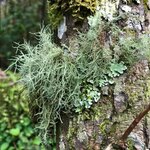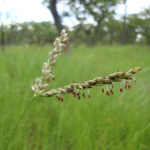Evolution

Some species have thrived only because they are food sources. Cows, for example, would be endangered and likely extinct if not for human animal husbandry. The same goes for many vegetables. They would be sparse or even gone if not for our genetic intervention.Yet nature can be unpredictable in many ways. When a Great Extinction occurred around 66 million years ago, dinosaurs, insects, and early birds all plummeted with the plant life that sustained them. Ash blocked the sun and global cooling occurred as the climate changed accordingly. Yet that allowed some species to thrive. A new paper…

Free fingers have obvious advantages on land, and don't even get us started on opposable thumbs, but provides aquatic or gliding animals with more suitable webbed ones. But both amphibians and amniotes, which include mammals, reptiles, and birds, can have webbed digits.
A new study has found that during embryo development, some animal species detect the presence of atmospheric oxygen, which triggers removal of interdigital webbing.
Amphibians, such as frogs, toads, salamanders, and newts, form fingers without webbing by differential growth patterns between the digits and the areas…

Cancer starts as a single rogue cell whose mutations then trigger aggressive growth, damaging the health of the organism. But if cancer cells were accumulating harmful mutations faster than they could be purged, wouldn't the population eventually die out? How do cancer cells avoid complete genetic meltdown?
To try and find answers, researchers in a recent study probed the most famous cultured cancer cells, HeLa cells, isolated from cervical cancer victim Henrietta Lacks in 1951 and becoming the first immortalized cell line.
These cells helped in the development of the polio vaccine,…

Evolution will happen, in medicines like antibiotics, and in crop protection like herbicides. Though some groups may continue to use older, less effective products such as organic copper sulfate, evidence-based agriculture works to create new products that do less environmental damage, such as neonicotinoids.
Critics of science argue that because mutations happen there is no point, new research will only create some new class of "superweeds" but it turns out the mutations are not happening as readily as we've been led to believe by detractors, at least in one plant. 70 million grain amaranth…

When most people think of bats they think of vampires or the World's Greatest Detective, but biologically they are much more diverse than pop culture reveals. With more than 1,300 species worldwide they are one of the largest groups of mammals. Some have large ears, others sport elaborate noses or long jaws. There's a lot of morphological variety, and that's a great lesson for what types of evolutionary forces shape the shapes of animals. Like their skulls.
A team of biologists at the University of Washington, post-doctoral researchers Jessica Arbour and Abigail Curtis, along with…

The Scandinavian wolf population is a bit of an evolutionary mystery. In the hoped for descent with modification scenario, textbook natural selection, there would be signs that hybrids of dog and wolf have contributed to this population, but none have been found.
Wolf-dog hybrids – crosses between wolf and dog – are known from many parts of the world and have mainly been the result of male dogs mating with female wolves. One such hybrid was found south-west of Stockholm, in 2017; another turned up near Oslo 20 years ago. In the Storting, the Norwegian parliament, the question has…

It is believed by some that zebras have black and white stripes as a defense mechanism against flies. To others, that seems too complex. In an Occam's Razor evolutionary universe it only leads to more speculation - why would they evolve such a sophisticated defense mechanism when it doesn't help, and flies are no less attracted to zebras than they are horses? Are zebras more prone to infectious diseases carried by African biting flies? Or is the whole premise more like evolutionary psychology than science, where there is speculation neckties evolved so men would look like superior mates…

Grasses have been able to short cut evolution by taking genes from their neighbors, finds a new study.
Since Darwin, much of the theory of evolution has been based on common descent, where natural selection acts on the genes passed from parent to offspring. But sometimes what seems to be natural selection is really artificial, like lateral gene transfer that allows organisms to bypass evolution and skip to the front of the queue by using genes that they acquire from distantly related species. Even by stealing them.
Scientists look at grasses because they include many of the most cultivated…

Why is it that large important complex systems often have about 10-100 billion (or 1E10 to 1E11 give or take an order of magnitude) objects? This seems to apply to the number of stars in the Milky Way (3E11), the number of galaxies in the observable universe (2E11), the number of cells in the first mammal (1E10), the number of neurons in a human brain (1E11), the number of nuclide pairs in human DNA (3E9), the number of proteins in a typical eukaryotic cell (1E10), and the current population of earth (7E9). Yes, many of these are not well determined yet and various estimates exist.
In a…

Through our evolutionary history, change is the one constant. 99.9999% of species that have ever existed are extinct and new ones emerged that adapted to constantly changing environments.
Baboons, with six species widespread in sub-Saharan Africa, are a modern example of adaptation and well studied when it comes to morphology, behavior and ecology. but less is known about their evolutionary history. That is why they are the subject of a new study on how speciation by lineage splitting, speciation by hybridization and associated gene exchange occurred.
Using genetic analyses,…